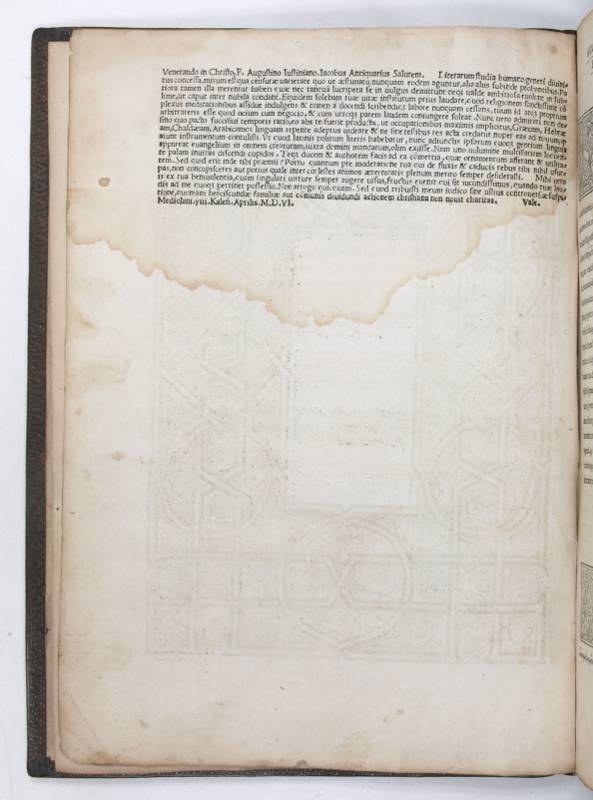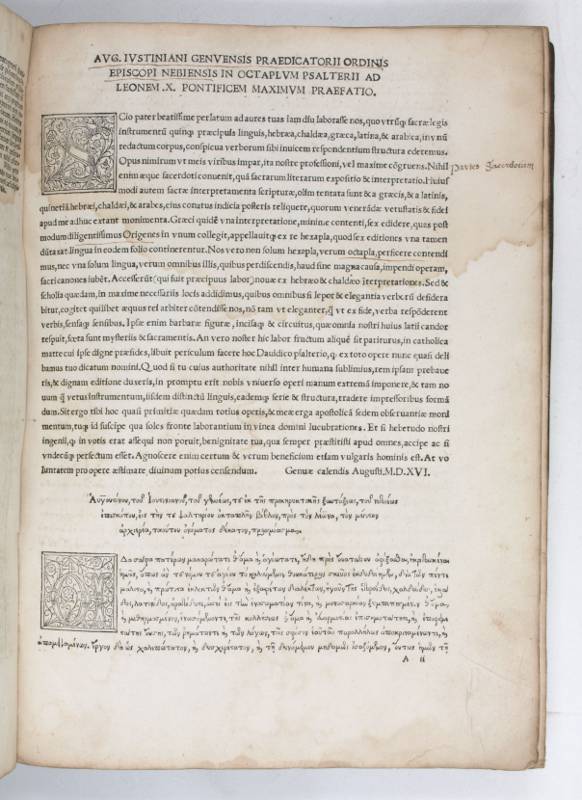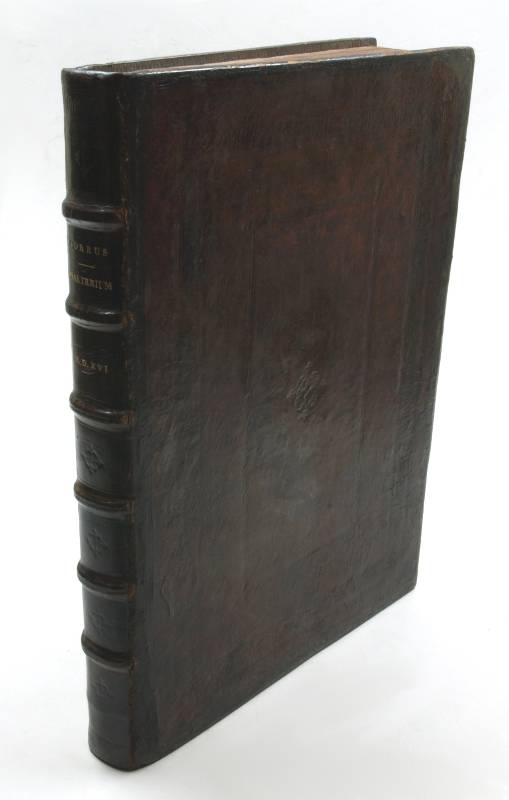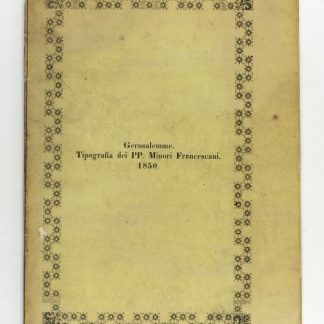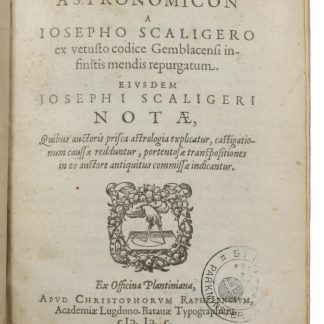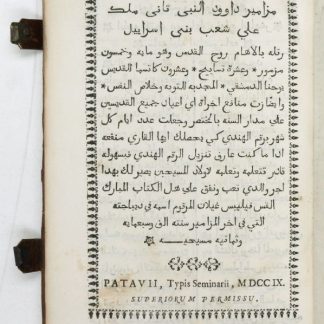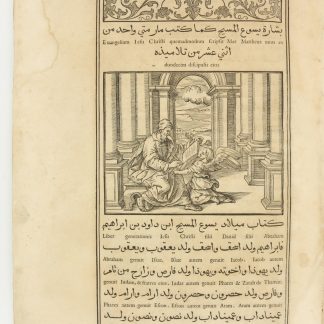The second book printed in Arabic from movable type and a primary source for Columbus’s second voyage to America
Psalterium Hebreum, Grecu[m], Arabicu[m], & Chaldaicu[m], cu[m] tribus latinis i[n]terp[re]tat[ion]ibus & glossis.
Folio (binding 250 x 335 mm, inner book 236 x 327 mm). 200 leaves, complete. Title printed in red and black within woodcut arabesque border, printer's device on final leaf. With parallel text in Hebrew, Latin, Greek, Arabic and Chaldaean (in their respective types), 4 columns to a page, 41 lines. 13 woodcut floriated initials (5 Latin, 4 Hebrew, 2 Greek and 2 Arabic). Rebound in near contemporary brown calf, carefully restored, edges and corners repaired, spine fully rebacked in seven compartments with modern gilt title and date.
First edition: the first polyglot edition of any part of the Bible, and also the first polyglot work ever published. It is of the utmost importance in several further respects, constituting the second book printed in Arabic from movable type (following Gregorio de Gregorii's "Kitab salat as-sawa'i", a Horologion for the Lebanese Melchites, printed in 1514), as well as the earliest Arabic printing of any portion of the Bible. It also contains the first edition of the Aramaic text of the Psalter and offers for the first time Kabbalistic texts from the Zohar. Furthermore, Giustiniani’s commentary provides the first substantial biographical reference to Columbus, and is thus noted as an Americanum.
The learned Dominican Agostino Giustiniani (1470-1536) was Bishop of Nebbio in Corsica from 1514 and later became the first Professor of Arabic and Hebrew at Paris. On his death he bequeathed his extensive library to the state of Genoa. He edited, supervised and financed the present edition and also wrote the commentary.
His book is the first multilingual edition of any part of the Bible. Aldus Manutius had planned a Psalter in three languages as early as the late 15th century, but his project was not realised. Printed in eight parallel columns on double pages, Giustiniani’s work comprises the text in Hebrew, a literal Latin translation thereof, the Latin Vulgate, the Greek Septuagint, Arabic, Aramaic (Chaldee), a literal Latin translation from the Aramaic, and scholia in the same languages. While Giustiniani aimed to edit the entire Bibel in this form, no further sections were published. He described his difficulties in selling the edition in his History of Genoa (1537), recording an edition size of 2,000 paper copies and 50 copies on vellum.
Giustiniani’s extensive commentary includes a long note to Ps. 19:4 ("et in fines orbis omnia verba eorum"; C7r-D1r), about the Genoese Christopher Columbus, who had died in 1506, containing previously unpublished information on his second voyage: "In this interesting sketch of the life and voyages of his fellow-townsman, Bishop Giustiniani gives an interesting account of the discovery of the new world, and states some facts not mentioned elsewhere" (Sabin).
This edition is also the only book printed at Genoa in the 16th century. The Milanese printer Pietro Paulo Porro maintained a press at Turin with his brother Galeazzo. Giustiniani summoned Porro to Genoa especially for the production of this edition, and had set up a press in the house of his brother Nicolo Giustiniani Paulo. The types were designed and cut for this edition under Porro’s direction.
Mild browning throughout, with some occasional waterstaining (more pronounced near beginning).
Adams B 1370. Darlow/Moule 1411, 1634 & 2401. Smitskamp, PO, 236. Alden-Landis 516/4. Harrisse, BAV no. 88 (pp. 154-158). Sabin 66468. Sander 5957. G. Roper, Early Arabic Printing in Europe, in: Middle Eastern Languages and the Print Revolution. A Cross-Cultural Encounter (Westhofen 2002), pp. 129-150, at p. 132, with colour ill. IV. StCB 25. Vinograd Genoa 1.


